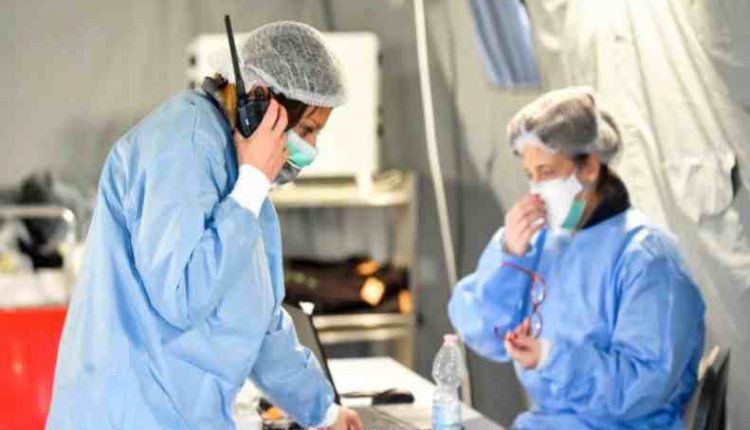
Kidney diseases: intensive training programme reduces the incidence of peritonitis in peritoneal dialysis patients, China
On the occasion of World Kidney Day, 11 March, ICN brings you a story from China of how nurses are working with patients and families to ensure adherence to treatment for end-stage kidney disease and reduce complications
Peritoneal dialysis (PD), along with hemodialysis and kidney transplantation, is an effective means of treating end-stage kidney disease (ESKD)
Because of its ability to protect the patient’s renal function and its low cardiovascular impact, it has become the preferred method of integrated treatment of ESKD.
The major complication of PD is peritonitis, the inflammation of the tissue lining the inner wall of the abdomen. Peritonitis accounts for 15-35% of hospitalisations of PD patients and is the leading cause of catheter removal and the transfer to hemodialysis.
Peritonitis is also the direct or leading cause of death for 16% of deaths of PD patients.
At the Peking Union Medical College Hospital (PUMCH) PD centre, many patients suffer from diseases that require long-term immunosuppressive therapy and 42.7% of PD patients have complicated diabetes susceptible to infection.
How to conduct safe PD for these patients and reduce the incidence of peritonitis is a constant challenge for specialised PD nurses.
Peritonitis is associated with many risk factors, and the approach of training for patients and their families has an important impact on the risk of PD related infections.
The previous training in PUMCH led to poor compliance and gradual forgetfulness in the long-term management of dialysis.
In 2003-2005, the incidence of peritonitis was 0.31-0.38 per patient per year.
To reduce the abdominal infection rate, an intensive training programme has been gradually established and improved based on clinical practice.
The main improvements in the current intensive training programme are described below.
PD nurses begin the health education when patients enter stage 4 or 5 of chronic kidney disease (CKD)
In order to alleviate the fears of patients who do not understand the importance of dialysis, the nurses provide health education for patients with CKD so that patients can fully understand the treatment and lifestyle after PD and hemodialysis.
Thus, patients and their families can actively participate in their treatment decisions and choose a dialysis method that they approve of.
The nurses also provide guidance on medication, nutrition, rehabilitation and psychological assessment of the dialysis operator’s learning abilities, study habits, etc.
The PD nurse instructs the patient to make preoperative preparations. After surgery, patients and their families are instructed on condition monitoring, diet modification and physical exercise.
Nurses examine the operator’s study habits, vision condition, hand tremors and fungal infections, and can develop a systematic training plan accordingly.
To reduce the number of trips to and from the hospital for patients and their families, the Centre has adopted a four-day training programme.
Each patient receives eight hours of training per day, which includes six to seven PD operations.
Theoretical training takes place simultaneously during dialysis. According to the Ebbinghaus forgetting curve, the process of forgetting is rapid: it starts fast and then slows down.
Therefore, operators are assessed daily on what they have learned that day and review the previous day’s training.
At the end of the programme, a theoretical and practical exam is conducted, and those who do not pass the exam receive an additional day of training to ensure safe home PD for the patient.
The median time from the first PD-related infection to the initial dialysis is 270 days, so the Centre evaluates and retrains operators every six months.
After the occurrence of a PD-associated infection, the reassessment and retraining are done promptly. Lectures and operational drills are regularly conducted to prevent peritonitis.
The International Society for Peritoneal Dialysis requires that the rate of peritoneal infections in dialysis centres be no higher than 0.5 cases per patient year, and it has been reported in the literature that the rate of peritonitis in excellent dialysis centres is 0.18-0.20.
With the change in training methods, the rate of peritoneal infections in the PUMCH PD Centre decreased from about 0.3 cases per patient year to 0.08-0.18 in 2015-2019.
The intensive training can lead to difficulties in medical staff shortages, with a nurse-patient ratio of 1:50 at the PUMCH PD Centre, which is lower than 1:30 as required by the Peritoneal Dialysis Quality Control Centre.
However, the good results of the intensive training have led us to insist on this programme. By investing more working hours and making continuous improvements, we are able to ensure the quality of patient care.
Contributor ICN: Zijuan Zhou, Senior Nurse, Peking Union Medical College Hospital


